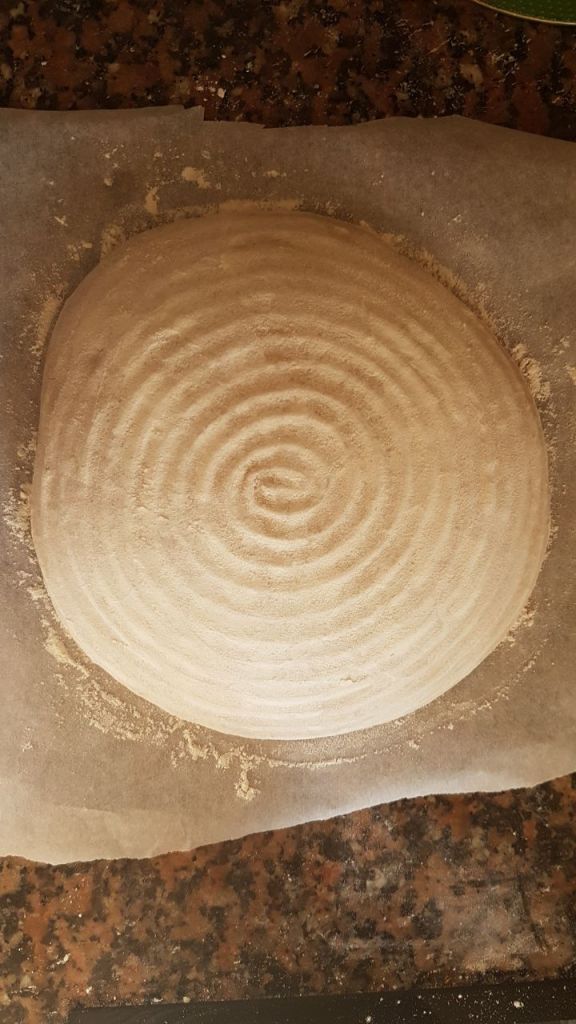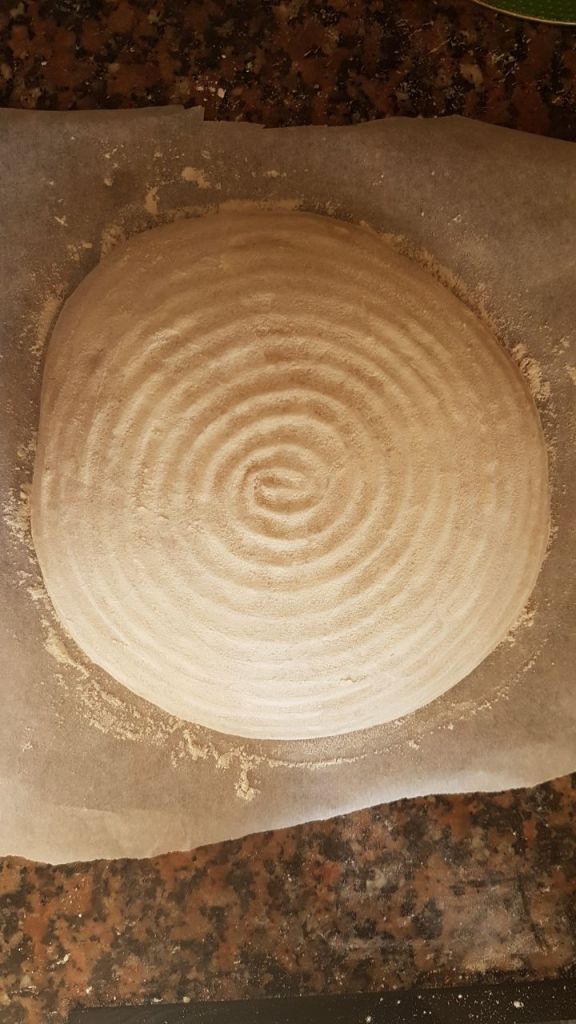Today I bring you a new bread recipe. Miche bread dis one the most famous rustics breads in France. The recipe I share today is a version of the one Sarah Owens shows in her book “Toast & Jam” (2017). My boule is a gazillion light-years away from looking like hers but a girl has to start somewhere!
| Ingredients |
• 110 g. of active rye sourdough leaven.
• 430 g. lukewarm water.
• 400 g. baker flour.
• 110 g. 000 type flour.
• 40 g. rye flour.
• 10 g. salt.
| Steps to follow |
• Mix the water with the flours until there are no traces of dry flour left.
• Let stand (autolysis) for 2 hours in a container covered with a cloth or a shower cap.
• After 2 hours, add the sourdough. Let stand 30 minutes and add the salt.
• From here, the block fermentation will take place for the next 4 hours, doing the stretch and fold technique every 40 minutes.
• After block fermentation, let the dough rest on a floured surface for 30 minutes.
• Next, form the boule and place it in a well-floured banneton.
• Cover the banneton with a cloth and a shower cap, then leave it to prove slowly in the fridge for 14/16 hours or over night.
• Remove the banneton from the fridge when preheating the oven. Score the way you like.
• Preheat the oven to 250 degrees with a Dutch oven inside for 20 minutes.
• Place the boule in the Dutch oven with a piece of baking paper on the base so that it does not stick.
• Bake for 20 minutes with the lid on and 10 with the lid off.
• Let cool for 1 hour before eating.










